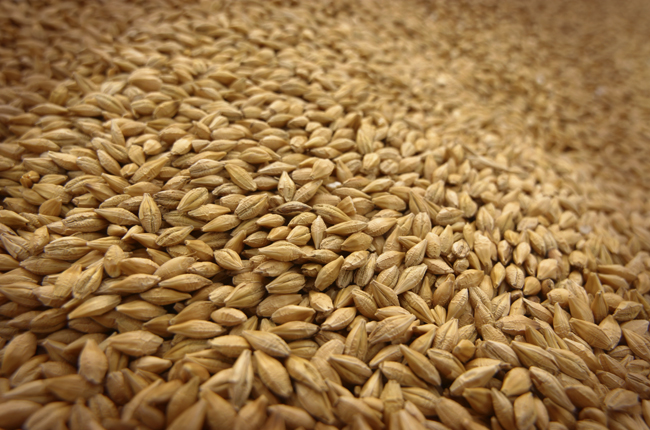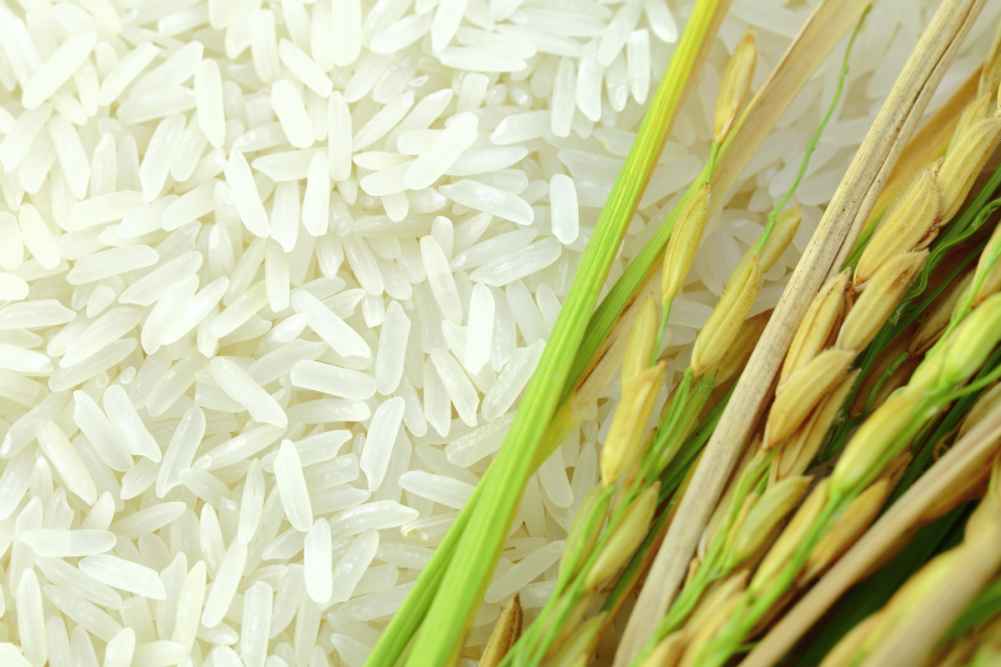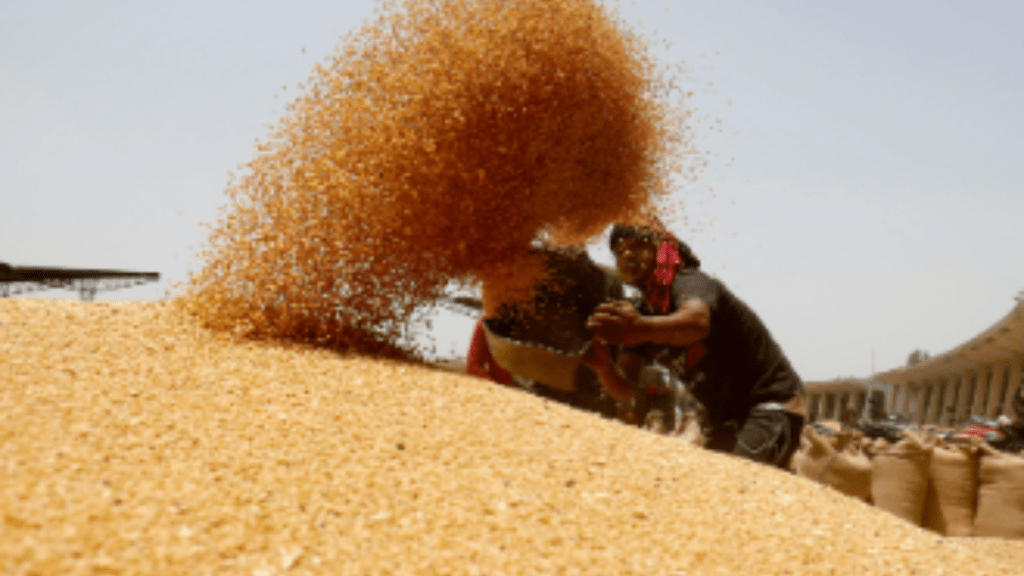Tags
Asia’s rice production hit by ‘very aggressive’ weedy varieties, with up to 80% of harvest loss
- Some farming methods used to fight the menace such as growing herbicide-tolerant rice varieties have failed to stem the weedy rice invasion
- While the origins of weedy rice are unclear, several of its varieties began to emerge in Asia about two decades ago
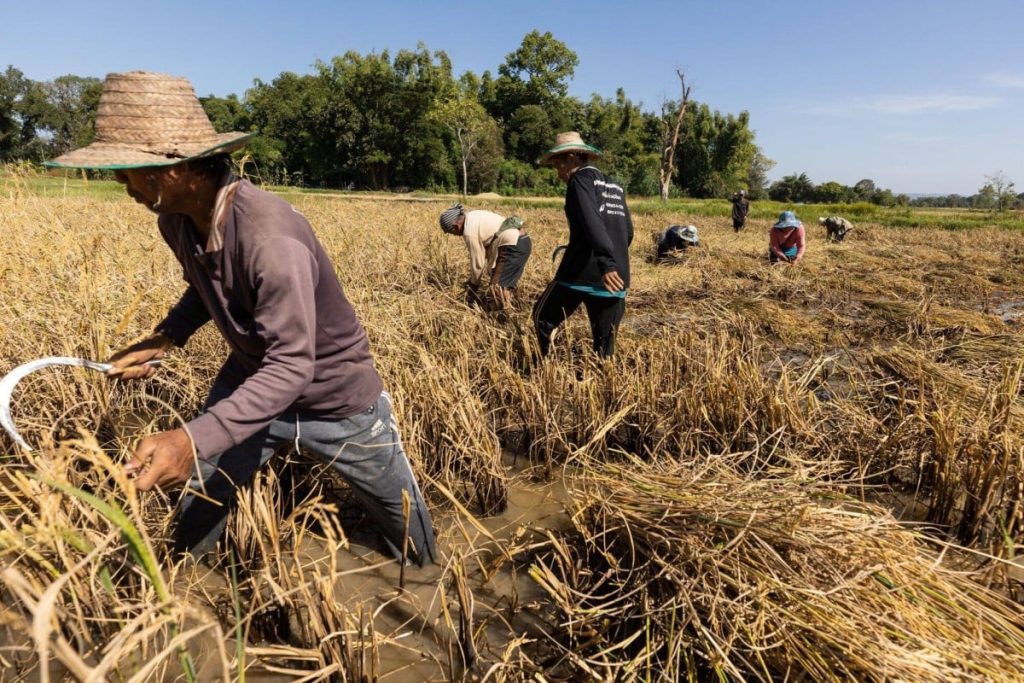
Farmers harvest paddy rice stalks in a farm land in Kalasin province, Thailand, on November 21, 2023. Photo: Bloomberg
Asia’s bountiful rice fields have fed the world for centuries, but the industry now faces a threat from a weedy “cousin” of the staple that has proliferated due in part to poor farming practices.
Mealy in texture with dark pigmentation and unfit for consumption, weedy rice can grow rapidly and taller than the regular crop varieties, depriving the latter of soil nutrients and sunlight.
As a result of the invasive weedy rice, harvest quality, yields and in turn market value of regular rice have declined significantly in recent years.
“They have become feral through a sort of accidental selection. They will eventually stick out over a crop field, but the problem is that by the time they are visible, there can often be quite an infestation,” Kenneth Olsen, Professor of Biology at Washington University, told This Week in Asia.
“A major weedy rice infestation can reduce crop harvests in a given field by over 80 per cent,” he said.
According to the World Economic Forum, Asian rice producers account for more than 80 per cent of global supply.
Olsen was part of an international team including biologists in the United States, Thailand, Malaysia and China who have analysed the menace in a new study.
The origins of weedy rice are unclear, although farmers first reported its presence about two decades ago. A high proportion of its varieties in East Asia appears to be directly descended from hybrid rice varieties introduced in the 1980s, Olsen said. Other varieties of weedy rice have also crossbred with wild rice varieties in Asia.
“These very aggressive weedy forms can outcompete other rice crops [in terms of growth],” he said.
According to several studies, weedy rice appears to be linked to certain cultivated rice varieties in Japan, South Korea and China.
It only requires a small amount of weedy rice plants per square metre to cause huge damage to the harvest of cultivated rice, Olsen said. For instance, the US saw crop losses equivalent to an amount that was sufficient to feed 12 million people due to the damage caused by weedy rice in the last few years, he added.
Some of the weedy varieties are highly effective at dispersing their seeds in rice fields because of a certain genetic mutation.
“These seeds can lie dormant and be perfectly viable for 20 years,” Olsen said.
Major rice producer Thailand had reported losses of about 10 per cent of its output as a result of the weedy rice problem in recent years, said Tonapha Pusadee, one of the study’s co-authors.
Some studies show that weedy rice varieties found in Southeast Asia have branched off into different evolutionary pathways, including several that originated from cultivated rice.
Thai farmers have resorted to several ways to deal with weedy rice, such as cutting the panicles, or the top portions, of their rice crops, using a chemical in a bid to eliminate the problem and planting rice for only one season, Pusadee said.
Leaving a field fallow can be effective to an extent, but most farmers need to plant crops to earn a living, she added.
“The farmer is usually not the landowner and pays rent for the field every year. To deal with it successfully, you have to leave the field [uncultivated] for two to three years and then try to kill all the weedy forms,” she added.
Herbicide-tolerant rice varieties have been introduced to help curb the spread of weedy rice. But they have worsened the problem because some weedy varieties have evolved to become herbicide-tolerant as well.
“So it is back to square one now. Some of the weedy rice has developed into herbicide-resistant rice types and cannot be killed by the herbicides,” said B K Song, a Malaysian weedy rice researcher who is a corresponding author of the new research paper on weedy rice.
The problem had also escalated because some farmers violated the guidelines of the herbicide-resistant rice and used inferior chemicals, he said. In parts of Malaysia, the failure of the herbicide-resistant rice technology adoption primarily stemmed from the lack of knowledge among farmers and deficiencies in support systems.
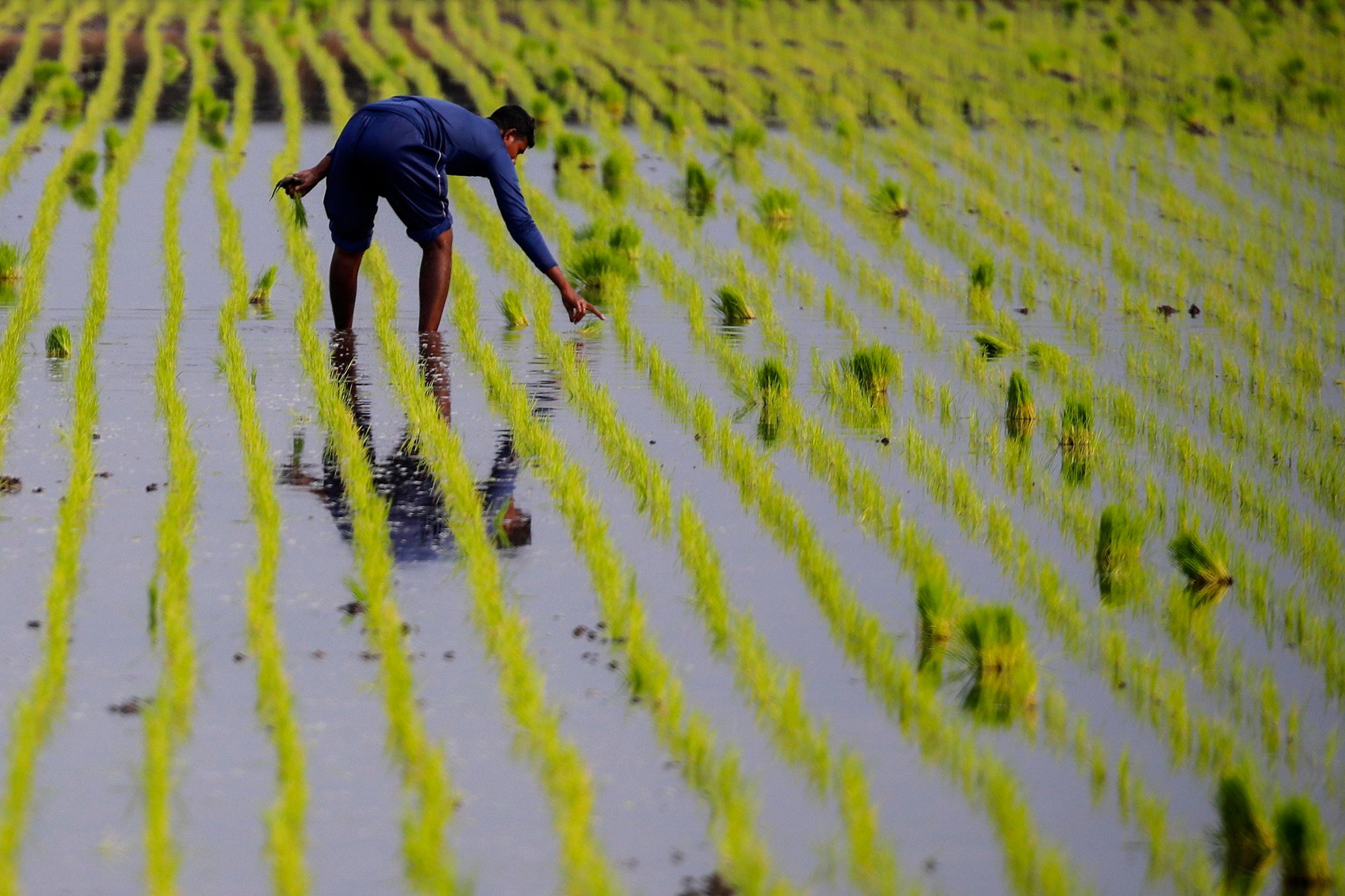
Hardworking farmers had been able to limit the growth of weedy rice to a maximum of 20 per cent of their typical rice production, but at the same time it had spread extensively in other parts of the nation, Song said.
Meanwhile, the rise in mechanised farming in Asia has worsened the problem, as it prevents farmers from plucking out weedy rice plants by hand.
“The countries that have embraced industrialised agriculture have faced the problem of weedy rice for over three, four decades,” Olsen said.
Even other rice-producing regions such as South America have not been spared the scourge, with Brazil reporting that weedy rice had hurt its crop production, he added.
https://www.scmp.com/week-asia/economics/article/3254745/asias-rice-production-hit-very-aggressive-weedy-varieties-80-cent-harvest-lossPublished Date: March 11, 2024




